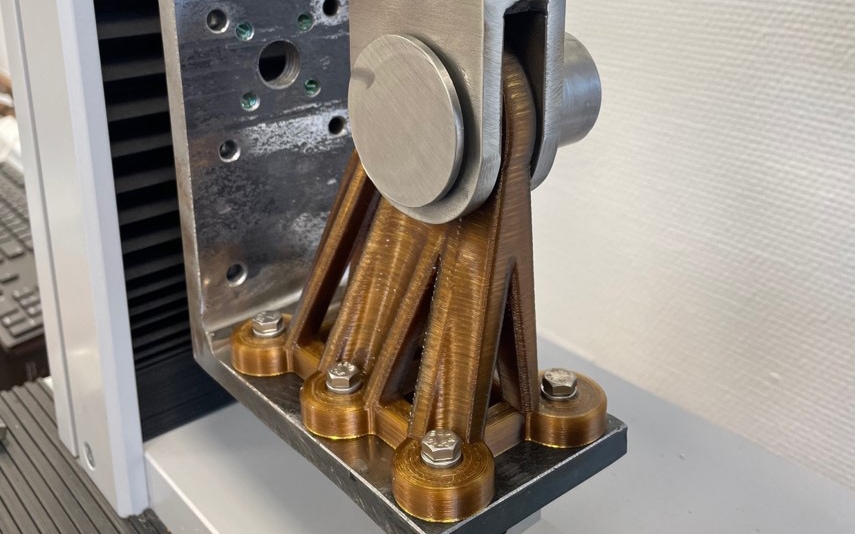3D Printing with PEEK, PEKK, & ULTEM™
Join AON3D's 3D printing application and materials experts for a 30-minute session that covers all the key information
In a collaboration between Zymergen, Hexagon, 3D4Makers, and AON3D Industrial 3D Printers, the trio teamed up to put one of this year’s most exciting new 3D printing polymers to the test, Z2 Polyimide. In tests supported by The Royal Netherlands Navy’s Expertise Centre Additive Manufacturing (ECAM), the new, easy-to-3D print formulation of Polyimide provided some very interesting results: a high strength, highly isotropic AM polymer part that, even despite its minimal cross-section, withstood 432 kg of load before failure.
The Z2 Polyimide part printed on the AON M2+ fractured exactly in the location predicted by the Digimat AM software, and with a fracture that propagated across multiple layers, rather than just across a single layer. This demonstrates an incredible amount of isotropy for a polymer extrusion based part.
The Part

A tie-down bracket for military cargo planes underwent predictive modeling and simulation from Hexagon’s Digimat AM software, a tool that can help engineers reduce overall lead times and help simulate end-part performance. The part was then 3D printed in Z2 Polyimide with 100% infill on the AON M2+ High Temperature Industrial 3D Printer and subjected to mechanical testing.
The Results – FFF isotropy that nears bulk material z properties
In testing, Hexagon’s software accurately predicted a loading failure point, and the part withstood a 432 kg load before failure. While Z2 Polyimide possesses a similar tensile modulus to ULTEM™ 9085, the material exhibits superior strength and elongation at break properties. This indicates that Z2 theoretically possesses far better interlayer weld strength and part isotropy compared to ULTEM™. In the testing, this high isotropy was observed by a part fracture through multiple layers in two locations, indicating that the layers had followed the stress front according to the overall structure, instead of inter-layer welds.
With Z2 Polyimide’s improved strength, isotropy, and the likelihood of meeting UL94 V0 and FAR 25.853 (FST) requirements (testing in progress), the material shows potential as an ULTEM™ alternative.
Ultimately, the results of this test show that material advancements and the open material industrial 3D printers that can print them are quickly advancing the 3D printing industry, while closed systems trail years behind. Learn more about the AON M2+ High Temperature 3D Printer or see it in person at Formnext 2022, Hall 12.1 – Stand F31, where 3D4Makers and AON3D are co-exhibiting and will be showcasing parts and printing Z2 Polyimide (PI) live.
Achieve New Levels of Part Performance & Throughput
3D print the world's highest performance polymers - bigger, faster, and stronger than ever.
